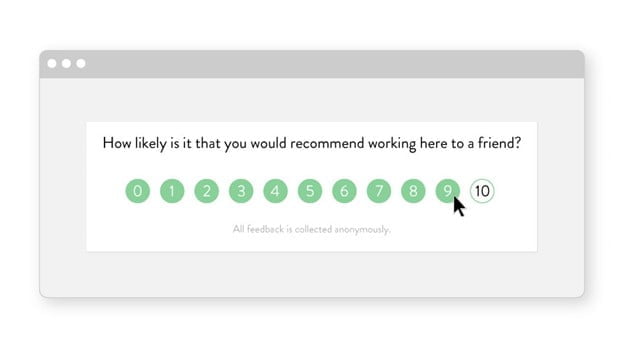Remote work collaboration is increasingly in demand.
Table of Contents
ToggleFreelancing, digital nomadism, and remote work, in general, have been on an upward trajectory for a few years now, but ever since the pandemic started, a staggering number of companies have suddenly had to adapt to this new, flexible model. While not every business is able to send their workers home (baristas from Starbucks can hardly replace their coffee shops with a computer), many have the freedom and the ability to go remote. However, even when they do, setbacks are an expected part of that journey. Preparing for challenges can help your remote team be more productive and reduce the amount of stress they will experience every day.
Here, we’ll break down the most common remote collaboration issues most companies come across, and we’ll offer a few tried and tested solutions that promise improvement. Every business is different, so perhaps you’ll need to get creative when you enable your teams to work remotely, but the following tips are the golden rules of effective remote collaboration that can empower your teams to grow your business even after the pandemic.
Lack of coordination and direction
The very first issue most businesses face once they transition to remote work is a complete lack of coordination. That means that your employees might be feeling overwhelmed with numerous changes in how you communicate and operate, that you didn’t prepare any educational material, or that you simply don’t have a collaboration strategy in place to help coordinate your projects and your employees.
Ideally, it would be best if you aimed to prevent this particular challenge by establishing a clear protocol for remote work. You need a simple agenda and a set of digital tools to assign work and keep track of everyone’s productivity, but you also need to communicate requirements clearly and regularly.
Missing out on the right tech tools for remote work collaboration

The chances are that you’ve already used a number of digital and automation tools while you were still working at the office. However, some of those tools might not work so well when you send your teams to work remotely. That said, you should never leave your workflow to chance, and you should look into remote-friendly digital tools such as project management software, time-tracking tools, CMS software, and communication platforms to help simplify this process for your employees.
Failing to use digital get-togethers for remote collaboration
In addition to your regular weekly video conference calls to get an overview of your weekly agenda, you need more digital opportunities to help your remote teams connect, build relationships, and advance. Now that they work from home, they don’t have many opportunities to attend workshops and lectures, and they don’t have conferences ideal for networking. To provide your teams with a digital alternative, you can use a virtual conference platform and set up digital events to help your employees and your industry peers connect.
Of course, you can organize a strictly internal event that will bring your different departments together, but you can always expand and invite others from your network, too. The goal is to use such events to boost your brand image, your company culture, and to help employees connect despite working from home.
No feedback loop
This is no easy feat for the business or the employees. Your employees might discover unique challenges depending on their position in your business, and if you don’t communicate regularly or you fail to ask the right questions, you can miss out on the opportunity to boost your productivity and your overall business processes. Your teams are an invaluable source of information, and their perspective can be helpful in spotting challenges to overcome as you transition to remote work. To help them adapt, you need to collect employee feedback regularly and use it to improve your business processes and your remote working model.

The lack of feedback can be detrimental to your employee relationships, too. So, set up regular one-on-one sessions if you have a small business to brainstorm potential solutions and discover actionable ideas for enhancing your remote workflow. If you have a larger organization, creating interesting surveys and quizzes for your employees to fill out can be a great way to collect feedback. You can use software similar to Typeform to craft customized surveys to fit your needs and then use the collected data to improve your remote collaboration over the long term.
Lack of trust in your teams
Transitioning from office-based work to home offices can be tricky for leaders, too. Without any supervision and guidance, you might feel that your employees won’t take their responsibilities as seriously as they normally should. The added stress of the pandemic and the lockdown might contribute to a lack of productivity, which can ultimately have a negative impact on your business. In essence, as a leader, you might not feel confident that your teams can do the work as effectively from home as they do at the office.
The lack of trust can be what ultimately ruins your company culture and your employee bonds. To prevent such an issue, you need to always communicate your expectations clearly, set specific and realistic goals for each employee, and monitor their progress with the help of project management tools we’ve mentioned. With a clear schedule and a list of tasks for each day and week, your teams will be accountable, and you’ll have an overview of their work progress. From increasing accountability for everyone in your organization to set up measurable goals and project milestones, you can monitor and track, remote collaboration can be a much more pleasant journey. These issues might happen even if you do your best to implement the proposed solutions, but it’s vital to keep tracking your business performance and to see where you have room to improve. Get out of that comfort zone of office work, empower your remote teams to collaborate with the right methodology and to
Summary:
Remote Collaboration Challenges
Freelancing, digital nomadism, and remote work, in general, have been on an upward trajectory for a few years now, but ever since the pandemic started, a staggering number of companies have suddenly had to adapt to this new, flexible model. This has resulted in some issues: 1. Lack of coordination and direction. 2. Missing out on the right tech tools for remote work collaboration. 3. Failing to use digital get-togethers for remote collaboration. 4. No feedback loop. 5. Lack of trust in your teams.




